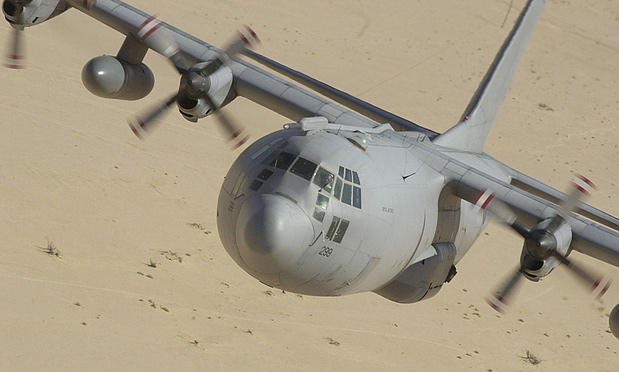
Abstract:
A decade after the military intervention that dislodged the Taliban-Al Qaeda combine, peace and stability continues to elude Afghanistan. There is still no consensus in Western capitals on what constitutes the ‘end-state’ in Afghanistan. The Western public’s frustration with a long-drawn war has coalesced with the global economic slowdown, the Euro crisis and the pressures of electoral campaign politics in the United States – thereby complicating the efforts for the long-term stabilization of Afghanistan. Premature announcements of exit and dwindling financial assistance have added to the Afghan anxieties of being ‘abandoned’ once again. This paper brings to light the divergent perceptions among the key stakeholders in Afghanistan and in the international community (IC) on the trajectory of the ‘inteqal’ (transition) process. The paper argues that the war in Afghanistan is essentially a war of perceptions on progress made thus far. This widening gap in perceptions is bound to complicate the transition and long term stabilization process
The Af-Pak Strategy, Surge & Exit
President Barack Obama, in emphasizing on a renewed focus and more resources to the ‘good war’ in Afghanistan, announced a troop surge in his speech at West Point on 1 December 2009. Along with the surge, by setting the end of 2014 as the date for drawdown of forces, he ended speculations of the United States’ intent in that country and at the same time provided some clarity to his domestic constituency.
It assuaged the concerns of the civilian team, led by Vice-President Joe Biden who had opposed the military commanders’ (General Stanley McChrystal and General David Petraeus) request of deploying additional troops for a population-centric counter-insurgency (COIN) campaign. However, the announcement of a date of drawdown sent a different message to the ‘friends and foes’ in the region. While it evoked concerns particularly among the Afghans, the message fed into the propaganda of the Taliban-led insurgency. The US Secretary of Defense Leon Panetta exacerbated the situation in early 2012 by stating that the transition process could be completed by 2013, a year earlier than 2014. Likewise, calls for early withdrawal by NATO allies have further added to the concerns inside Afghanistan and the region.
Although the declaration arrived at the 2010 Lisbon summit had stated that the ‘transition will be conditions-based, not calendar-driven, and will not equate to withdrawal of ISAF-troops’, there was a perceived turn around at the Chicago Summit in May 2012. President Obama and the NATO leaders agreed to end their role in the Afghan war, stating it is time for the Afghan people to take responsibility for their own security and for the US-led international troops to go home. The Summit decision called for the beginning of full transition in all parts of Afghanistan by mid- 2013 and the Afghan forces taking the lead for security nation-wide.
As per the plan, the ISAF will gradually draw down its forces to complete its mission by 31 December 2014. Such hasty announcements of early troop drawdown, largely perceived as ‘exit’, have been the source of obvious concerns inside Afghanistan, especially when the insurgency is perceived to be growing in strength and the capacity of the Afghan National Security Forces (ANSFs) to withstand the insurgent onslaught remains suspect. Analysts in the West posit that the withdrawal of Western forces, in such a situation, would lead to a collapse of the evolving security system. Others point out that transition will either fail or be determined by Afghanistan’s internal dynamics and the role of regional states, regardless of what the US, Europe, and other aid-donors do.
Amid such pessimistic assessments, the talks and attempts of actualizing an effective transition and stabilization process appear to be a mere lip service. It is, thus not surprising that Afghans view the inteqal (transition) process as a last opportunity for the international community to set the course right in their country.
The paper is an exercise at stock-taking of the ground realities vis-a-vis the varying perceptions among the Afghans and the international community on the progress and challenges for Afghanistan’s transition and long-term stabilization. While the West in its haste to ‘exit’ wants to demonstrate progress, there remain concerns on the ground on the fragility of these achievements. The Afghans, while acknowledging progress, seek longer international commitment to address the grey areas that could undermine gains achieved thus far. More importantly, ‘unity of effort’ and an appropriate strategic communications strategy is imperative to address this widening perception gap. Unlike pessimistic analyses that predict a return of the Taliban in post-2014 Afghanistan, the paper argues against such possibility.
The paper highlights the tangible gains made in the security, political, governance and economic sectors during the decade-long international presence in the country and also, the areas where gains remain fragile and reversible. Unless unified effort is made to shore up the state and institution building processes before the drawdown date of 2014, the dangers of reversal are imminent resulting in a civil war (worse case scenario) or the continuation and intensification of chaos and instability (stalemate), with the external power interventions and the regional proxies further exacerbating the internal-external conflict dynamics (internecine warfare).
The Evolving Security Situation and the Taliban led Insurgency Afghanistan continues to encounter a fragile security situation.
While the 2010 troop surge achieved notable security gains on the ground, analysts argue that such gains are reversible and almost un-sustainable by the ANSFs alone. According to the drawdown plan, the additional troops of 33,000 have been withdrawn in September 2012 leaving behind 68,000 US troops in the country. As the debate on the usefulness of the surge continues, the US-Afghan Strategic Partnership Agreement signed on 1 May 2012 has ensured a minimal troop presence (20- 30,000) for limited counter-terrorism, train and assist mission. While the security situation is said to have improved in south-western Afghanistan, eastern Afghanistan, primarily provinces of Paktika, Paktia, and Khost (known as the P2K region), bordering Pakistan’s Federally Administered Tribal Areas (FATA), and area of operations of the Haqqani Network, remain deeply insurgency infested. The campaign of violence by the insurgents has been lethal and continues to sap the nascent institutions of the Afghan state.
By employing asymmetric tactics with increasing use of improvised explosive devices (IEDs) and suicide bombers, the insurgents have managed to keep the levels of troop deaths high. High-profile attacks on symbolic targets like the Intercontinental hotel in Kabul (June 2011), British Council (August 2011), the American embassy (September 2011), Kabul Star Hotel (April 2012), Qargah attack (June 2012), Camp Bastion (September 2012) demonstrate their deep strike capability and intent to garner instant and worldwide media attention. The Taliban have adopted brutal tactics of violent retribution and intimidation of the population, targeting those deemed to be associated with, or sympathetic to, the government.
This strategy witnessed rampant killing and abduction of government officials, aid workers, teachers, religious and tribal leaders. . Systematic targeting and elimination of power brokers, government officials and police chiefs in 2011 added new set of complexities and raised the specter of civil war in the north. Likewise, elimination of key government officials and power brokers in the South, has led to a power vacuum in the Pashtu areas. The Taliban have established shadow governments in areas where the writ of the Afghan government was limited or nonexistent. Much of the insurgent strength is derived from the sense of safety the insurgents are accorded across the Durand line, within Pakistan. Taliban recruits and enjoys safe havens in that country.
The Pentagon’s April 2012 report to Congress on Security and Stability in Afghanistan stated that despite progress, international efforts to stabilize the country ‘continued to face both long-term and acute challenges’. ‘The Taliban-led insurgency and its Al Qaeda affiliates still operate with impunity from sanctuaries in Pakistan,’ the report said. ‘The insurgency’s safe haven in Pakistan, as well as the limited capacity of the Afghan Government, remain the biggest risks to the process of turning security gains into a durable and sustainable Afghanistan’, it added. The heightened tensions between Pakistan and the US over the assassination of Osama bin Laden by American Special Forces in the garrison town of Abbottabad in May 2011 and the subsequent accidental killing of 28 Pakistani security forces during a NATO air raid in Salala in November 2011, the increase in drone strikes inside Pakistani territory, have added complexities and limited the scope of the counter-terrorism cooperation with Pakistan. This has also resulted in Pakistan being at the ‘margins’ in the evolving end game in Afghanistan.
Security Sector Reform (SSR) and Preparedness of ANSF
At the 2010 Lisbon Summit, NATO provided a road map to transfer security responsibility to the Afghans. The first tranche of provinces, districts, and municipalities, which has 25 per cent of Afghanistan’s population, was handed over to the Afghans in July 2011. The second and third tranches were announced in November 2011 and March 2012 respectively.While the second tranche put the Afghans in the lead of providing security for more than 50 per cent of the country’s population, with the beginning of the third tranche, 75 per cent of the Afghan population will be living in areas where the ANSF have lead security responsibility.
As per the decisions arrived at the May 2012 Chicago Summit, full transition in all parts of Afghanistan will begin by mid- 2013. The natural corollary of the ANSF taking charge of the security of Afghanistan is a change in NATO mission – from combat to an advisory role. The shift to ‘train and assist’ mode has further compounded the complexities and brought to sharp focus the levels of preparedness of the Afghan forces for independent action. The contours of post- 2014 security assistance to Afghanistan will be mentoring, training, and funding the ANSF. Although numerically, both the Afghan National Army (ANA) the Afghan National Police (ANP) are impressive, with 194,466 troops and 149,642 policemen respectively, widespread reservations have been expressed on their capacities.Will the ANSF, product of a rushed, under-resourced and frequently revamped recruitment and training procedure, be able to deliver, remains a critical question.





Be the first to comment